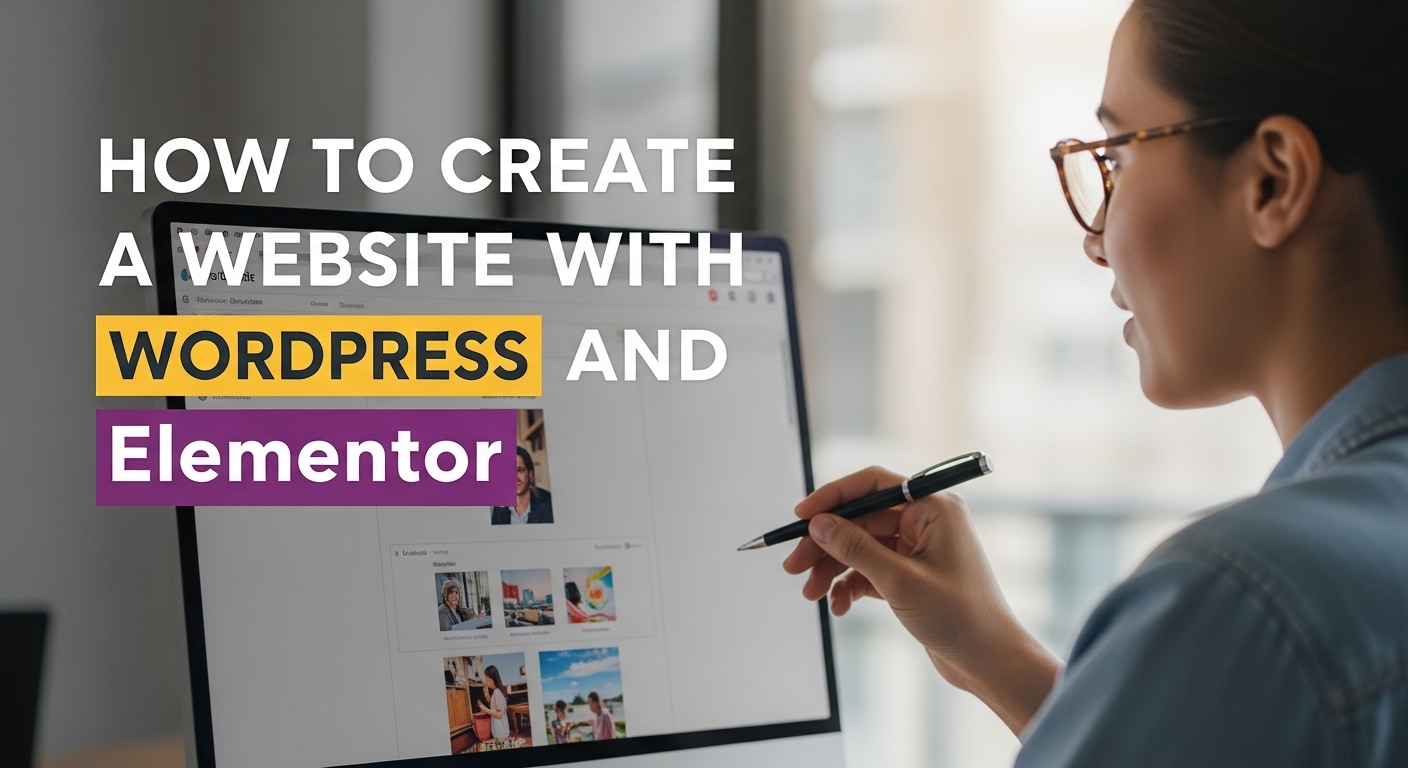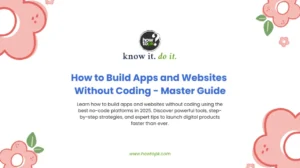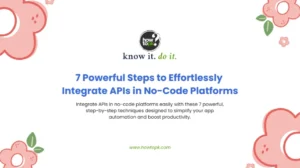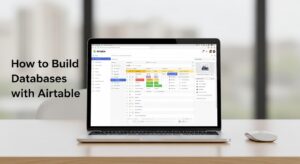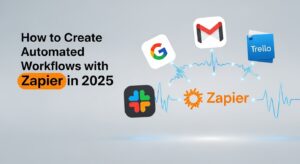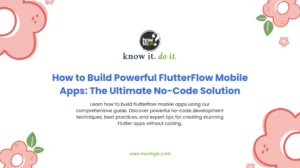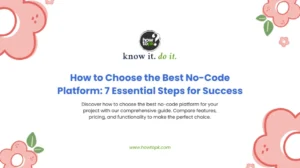Learning how to create a website with wordpress and elementor has become essential for anyone looking to build professional websites without extensive coding knowledge. WordPress powers over 40% of all websites globally, and when combined with Elementor’s drag-and-drop functionality, it creates an unbeatable platform for website creation.
This comprehensive guide will walk you through every step needed to create a website with wordpress and elementor successfully, from initial setup to advanced customization techniques.
What is WordPress and Elementor?
WordPress is the world’s most popular content management system (CMS), offering flexibility and scalability for websites of all sizes. Elementor, on the other hand, is a powerful page builder plugin that transforms WordPress into a visual website builder.
When you create a website with wordpress and elementor, you’re combining:
- WordPress’s robust foundation and extensive plugin ecosystem
- Elementor’s intuitive drag-and-drop interface
- Professional design capabilities without coding requirements
Why Choose WordPress and Elementor for Your Website?
Feature | WordPress Alone | WordPress + Elementor |
Design Flexibility | Limited to theme constraints | Complete design freedom |
Learning Curve | Moderate | Beginner-friendly |
Customization | Requires coding knowledge | Visual drag-and-drop |
Cost | Free (with hosting) | Free version available |
Professional Results | Good | Exceptional |
Step 1: Set Up Your WordPress Foundation
Before you can create a website with wordpress and elementor, you need a solid WordPress installation.
Choose Your Hosting Provider
Select a reliable hosting provider that offers:
- One-click WordPress installation
- SSL certificates included
- Good customer support
- Adequate storage and bandwidth
Popular options include Bluehost, SiteGround, and WP Engine.
Install WordPress
Most hosting providers offer one-click WordPress installation through their control panels. This process typically takes less than 5 minutes and automatically sets up your WordPress database and files.
Step 2: Install and Configure Elementor
Install the Elementor Plugin
- Navigate to your WordPress admin dashboard
- Go to Plugins > Add New
- Search for “Elementor Page Builder”
- Install and activate the plugin
Choose Your Elementor Version
Elementor offers two versions:
Elementor Free:
- Basic widgets and templates
- Limited design options
- Perfect for simple websites
Elementor Pro:
- Advanced widgets and features
- Professional templates
- Theme builder functionality
- WooCommerce integration
Step 3: Select and Configure Your WordPress Theme
When you create a website with wordpress and elementor, choosing the right theme is essential for optimal performance.
Best Themes for Elementor
- Hello Elementor – Elementor’s official lightweight theme
- Astra – Fast-loading and highly customizable
- GeneratePress – SEO-optimized and performance-focused
- OceanWP – Feature-rich with Elementor compatibility
Theme Configuration Tips
- Choose lightweight themes for better performance
- Ensure mobile responsiveness
- Verify Elementor compatibility
- Consider loading speed impact
Step 4: Plan Your Website Structure
Before diving into design, plan your website architecture efficiently.
Essential Pages to Create
Page Type | Purpose | Priority |
Homepage | First impression and navigation hub | High |
About | Build trust and credibility | High |
Services/Products | Showcase offerings | High |
Contact | Enable customer communication | High |
Blog | Content marketing and SEO | Medium |
Privacy Policy | Legal compliance | Medium |
Navigation Structure
Create a logical menu structure that guides visitors through your website naturally. Consider user experience and conversion paths when organizing your pages.
Step 5: Design Your Homepage with Elementor
Using Elementor’s Interface
Elementor’s editor consists of:
- Left Panel: Widgets, templates, and settings
- Center Canvas: Live preview of your page
- Top Bar: Publishing and preview options
Essential Homepage Elements
Hero Section:
- Compelling headline with your focus keyword
- Clear value proposition
- Call-to-action button
- High-quality hero image or video
Services/Products Overview:
- Brief descriptions of main offerings
- Visual icons or images
- Links to detailed pages
Social Proof:
- Customer testimonials
- Client logos
- Reviews and ratings
Contact Information:
- Easy-to-find contact details
- Contact form integration
- Location map if applicable
Step 6: Create Inner Pages and Content
To fully create a website with wordpress and elementor, you need well-designed inner pages.
About Page Design
Your About page should include:
- Company story and mission
- Team member profiles
- Credentials and achievements
- Trust signals and certifications
Service/Product Pages
Structure these pages with:
- Clear service descriptions
- Benefits and features
- Pricing information
- Call-to-action elements
Blog Integration
When you create a website with wordpress and elementor with blogging in mind:
- Design blog post templates
- Create category and archive pages
- Implement SEO best practices
- Add social sharing buttons
Step 7: Optimize for Performance and SEO
Performance optimization is crucial when you create a website with wordpress and elementor.
Speed Optimization Techniques
Image Optimization:
- Compress images before uploading
- Use WebP format when possible
- Implement lazy loading
Caching:
- Install caching plugins like WP Rocket or W3 Total Cache
- Configure browser caching
- Use CDN services
Code Optimization:
- Minify CSS and JavaScript
- Remove unused plugins
- Optimize database regularly
SEO Best Practices
- Install Yoast SEO or RankMath plugins
- Optimize page titles and meta descriptions
- Use proper heading structure (H1, H2, H3)
- Create XML sitemaps
- Implement schema markup
- Optimize for mobile devices
Advanced Elementor Features
Theme Builder
Elementor Pro’s Theme Builder allows you to:
- Design custom headers and footers
- Create single post templates
- Build archive page layouts
- Design 404 error pages
Dynamic Content
Leverage dynamic content features to:
- Display custom field data
- Create automated content updates
- Build membership site layouts
- Integrate with WooCommerce
WooCommerce Integration
To create a website with wordpress and elementor for e-commerce:
- Design custom product pages
- Build shopping cart layouts
- Create checkout page designs
- Implement product widgets
Common Mistakes to Avoid
When learning to create a website with wordpress and elementor, avoid these pitfalls:
- Overloading with Widgets: Too many elements slow down your site
- Ignoring Mobile Design: Always preview on mobile devices
- Poor Image Optimization: Large images drastically affect loading speed
- Inconsistent Design: Maintain consistent fonts, colors, and spacing
- Neglecting SEO: Optimize each page for search engines
Maintenance and Updates
Regular Updates
- Update WordPress core regularly
- Keep Elementor plugin current
- Update themes and other plugins
- Monitor for security vulnerabilities
Performance Monitoring
- Track website speed regularly
- Monitor uptime and availability
- Analyze user behavior with Google Analytics
- Conduct regular SEO audits
Backup Strategy
- Implement automated backup solutions
- Store backups in multiple locations
- Test backup restoration process
- Document recovery procedures
Cost Breakdown
Component | Free Option | Paid Option |
WordPress | Free | Free |
Hosting | N/A | $3-50/month |
Domain | N/A | $10-15/year |
Elementor | Free version | $49-199/year |
Theme | Free themes | $30-100 |
Total Annual Cost | $46-780 | $122-1,564 |
Conclusion
Learning to create a website with wordpress and elementor opens up endless possibilities for building professional websites without extensive technical knowledge. This powerful combination provides the flexibility of WordPress with the visual design capabilities of Elementor.
By following this comprehensive guide, you now have the knowledge to create a website with wordpress and elementor that not only looks professional but also performs well in search engines and provides excellent user experience.
Remember that website creation is an iterative process. Start with the basics, launch your site, and continuously improve based on user feedback and performance data.
The journey to create a website with wordpress and elementor may seem daunting initially, but with practice and patience, you’ll master these tools and create stunning websites that achieve your business goals.
For additional resources and advanced tutorials, visit the official Elementor website and WordPress.org documentation.

